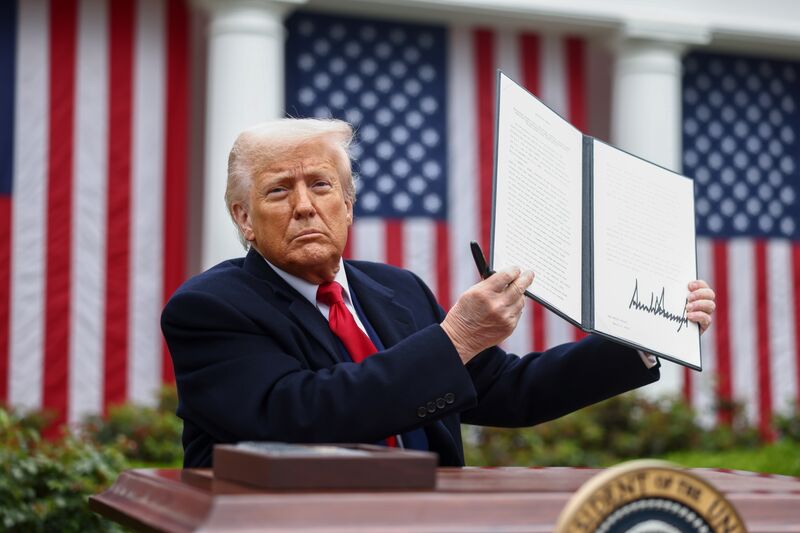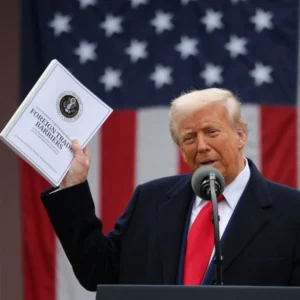Trump Tariffs: Why India Is Better Placed Than China
Donald Trump recently announced new tariffs, which could reshape global trade. These tariffs primarily target imports from multiple countries, including China. While some nations may struggle to adapt, experts believe India is in a stronger position than China and other rivals. This article explores the reasons behind this belief and what it means for India’s economy.
Trump’s Tariffs: A Global Trade Shift
Trade wars have long been a tool for economic dominance. Trump’s tariffs are aimed at protecting U.S. industries and reducing dependence on foreign goods. However, these measures have significant consequences for global economies. As countries scramble to adjust, India seems better positioned to navigate these changes compared to China and other competitors.
China, which has been a manufacturing giant for decades, is heavily reliant on exports, particularly to the U.S. The new tariffs could hit its economy hard. On the other hand, India’s diverse economic structure and growing domestic market make it less vulnerable. Let’s explore why experts think India has an edge.
Why India Is Better Placed Than China?
1. Lower Dependence on U.S. Markets
One major reason India is better positioned is its lower dependence on the U.S. for exports. While China exports a significant portion of its goods to the U.S., India’s trade is more evenly distributed. This means any tariff shock from the U.S. would have a lower impact on India’s economy.
China, on the other hand, has built its economy around large-scale exports. Any disruption in trade relations with the U.S. can cause significant instability. India, with its balanced trade relations, is more resilient.
2. Diverse Trade Partnerships
India has been steadily building strong trade relationships with Europe, the Middle East, Southeast Asia, and Africa. This diversification helps minimize risks associated with U.S. tariffs. Unlike China, which has a higher reliance on Western markets, India’s strategic partnerships allow it to pivot more easily in response to economic changes.
For instance, India’s strong ties with the Gulf nations ensure energy security, while trade agreements with ASEAN countries support exports. China, meanwhile, is more entangled in the U.S.-China trade war, making it harder to diversify quickly.
3. Strong Domestic Market
India’s economy is supported by a massive domestic market. With a population of over 1.4 billion people, consumer spending remains a key driver of economic growth. This reduces India’s dependence on exports, making it less vulnerable to external trade shocks.
China also has a large domestic market, but its economy has been built primarily on manufacturing for exports. If exports slow down due to tariffs, China’s growth could suffer more than India’s.
4. Rising Manufacturing Capabilities
India has been making significant progress in boosting its manufacturing sector. Initiatives like ‘Make in India’ and the Production-Linked Incentive (PLI) scheme are attracting investments and increasing local production. This shift reduces dependence on imports and strengthens the economy.
China has long been the world’s factory, but rising labor costs and geopolitical tensions are pushing companies to look for alternatives. India’s improving infrastructure and government support make it an attractive choice for businesses seeking new production hubs.
5. Competitive Labor Costs
India has some of the lowest labor costs among major economies. This makes it an appealing option for multinational companies looking to relocate their manufacturing operations. While China still has a skilled workforce, its labor costs have increased over the years, reducing its cost advantage.
India’s young and growing workforce gives it a competitive edge. The availability of skilled labor at lower wages allows India to attract more global companies looking for cost-effective production solutions.
6. Government Policies Supporting Growth
The Indian government has been proactive in implementing policies that attract foreign investments. Tax incentives, simplified regulations, and infrastructure development are making India a more business-friendly destination.
China’s strict regulations and ongoing trade tensions with the U.S. create uncertainty for businesses. Many companies are now exploring alternative markets, and India is a strong contender due to its favorable policies and political stability.
How Other Rivals Compare?
India is not the only country benefiting from China’s trade challenges. Countries like Vietnam, Mexico, and Indonesia are also attracting investments. However, India has several advantages that set it apart.
Vietnam has become a major manufacturing hub, but its smaller workforce and limited domestic market make it less competitive than India. Mexico benefits from its proximity to the U.S., but its economic stability remains a concern. Indonesia has potential, but infrastructure challenges slow its progress.
India, with its mix of a skilled workforce, a large consumer base, and improving infrastructure, presents a more balanced opportunity for businesses looking to shift operations away from China.
Key Industries That May Benefit
Several Indian industries are expected to gain from the trade shifts caused by Trump’s tariffs. These include:
- Electronics Manufacturing: Companies are setting up production units in India to reduce reliance on China.
- Textiles and Apparel: India’s textile industry is growing, benefiting from global companies seeking alternative suppliers.
- Automobile and Components: India is emerging as a key player in automobile manufacturing and exports.
- Pharmaceuticals: India is a major pharmaceutical supplier, and the trade war may boost its exports further.
By capitalizing on these opportunities, India can strengthen its position in global trade.
Challenges India Needs to Overcome
While India has many advantages, there are still challenges to address:
- Infrastructure Development: India must continue improving roads, ports, and logistics for smoother trade.
- Ease of Doing Business: Reducing bureaucratic hurdles will attract more foreign investments.
- Skilled Workforce Training: Strengthening vocational training programs will help India remain competitive.
- Stable Trade Policies: Consistent and transparent trade policies will enhance investor confidence.
What’s Next?
Experts believe India should continue focusing on improving infrastructure, regulatory frameworks, and business-friendly policies. By addressing these areas, India can position itself as a strong alternative to China and other manufacturing hubs.
The global trade landscape is shifting, and India has the potential to emerge as a key player. If the government and businesses work together, India could become one of the biggest beneficiaries of the new trade dynamics.
Final Thoughts
Trump’s tariffs have created uncertainties, but they have also opened up new opportunities. India’s economic strengths, strategic policies, and strong domestic market give it a competitive edge. With continued efforts, India can capitalize on these changes and establish itself as a global trade leader.
Stay tuned for more updates on global trade and India’s economic growth!








